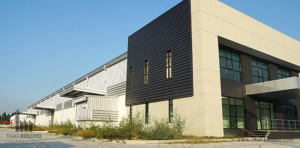When pests invade, they spread germs that cause diseases and make people and pets sick. Unusual odors, droppings, and bites are often early signs of infestation.
Bakersfield Exterminator controls pests in homes and businesses by using traps, baits, and chemical treatments. They also provide recommendations to help prevent future pest problems.

Pest identification is the first step in a pest control program. Accurate pest identification is crucial for successful IPM because management strategies vary greatly depending on the specific organism — whether it’s an insect, disease, weed, or vertebrate. Incorrect pest identification can lead to inappropriate control tactics that waste time and money and can even pose risks to people or the environment.
Correct pest identification begins with field scouting or monitoring pest populations. This process involves observing the occurrence of pests, looking for signs of damage, and searching for their eggs or other evidence of their presence in your garden or crop fields. It’s important to identify pests to the species level when possible. Pests in the same family and genus often exhibit very different behaviors, host plant preferences, natural enemy complexes, and other characteristics.
Proper identification also enables you to learn more about the biology of the organism and how it reproduces, feeds, moves through the environment, etc. This information will help you develop a plan for eliminating or reducing the population without using harmful chemicals.
You’ll need a number of tools and techniques to accurately identify pests, including a magnifier, a good pair of binoculars, and a flashlight. A magnifier is useful for inspecting hard-to-reach spots or examining frass (excrement) and other evidence of pest activity. Binoculars can be helpful for observing a moving pest in greater detail.
A good pair of gardening gloves and a pest-specific field guide can also help in the identification process. Many pests hide or move in dark, secluded areas. A flashlight can be helpful in identifying these locations, as well as checking behind and beneath equipment and furniture. You’ll also need a telescoping mirror to enable you to see the underside of leaves or the underside of a structure.
At a minimum, you should always be able to identify your pests to order so that you can select an appropriate, biological insecticide product if necessary. Species-specific identification will also be helpful for finding out if the insecticide you’ve applied has been effective against that particular pest.
Pest Control Methods
A pest control method is any practice used to limit or eradicate a pest infestation. This includes equipment and barriers that prevent pests from entering an area, such as screens on windows, and physical traps that catch and kill them, including snap traps and humane mousetraps. The goal of these methods is to reduce the use of chemicals, which are hazardous to humans and non-target organisms like plants, animals, and beneficial insects.
Biological pest control methods introduce natural enemies of a pest to reduce its numbers. Examples include parasites, predators, and disease organisms. This is a less common approach to pest control but can be highly effective, particularly for garden and yard pests.
Chemical pest control involves using specific chemicals to target and kill infestations of bugs, weeds, or rodents. Thousands of different chemicals are available to treat almost any pest problem, including herbicides, insecticides, fungicides, and rodenticides. Increasingly, however, pest control professionals are turning to environmentally friendly and safer alternatives to chemical products. Fogging, for example, uses special ULV (ultra low volume) machines to spread tiny particles of an insecticide over broad areas, which is both efficient and effective.
Another alternative is nematodes, microscopic worms that are useful as a biological pest control. These kill many species of pests, such as fleas, grubs, and ants, by injecting them with a bacteria that causes them to die from internal poisoning. Other environmentally friendly and safer alternatives include introducing beneficial microorganisms, such as rhizobia to promote root growth or releasing sterile males to eliminate overabundant populations of an unwanted species.
Integrated Pest Management, or IPM, is the most commonly used approach to controlling pests, particularly in homes and yards. It involves monitoring and scouting pests to determine their types and population levels, assessing and considering economic or aesthetic injury thresholds, then selecting and implementing an action plan that may include cultural, mechanical, biological, or chemical controls. Eradication is rarely a goal of IPM, but sometimes an exception is made when it is possible to completely get rid of a damaging species, such as Mediterranean fruit flies or gypsy moths.
Pest Prevention Techniques
A variety of techniques are used to prevent pests before they reach a property. These techniques involve altering the environment to make it less hospitable. Devices, traps, barriers, fences, radiation, and even electricity can be used to restrict pest access to areas. These methods are often more effective than pesticides. They are also usually less hazardous to human beings and the environment.
The goal of preventing pests is to stop them from causing damage, rather than simply controlling the level of harm they cause. Exterminators use a variety of prevention techniques to achieve this goal, which are often combined with control strategies.
Prevention is more effective if the pest’s habits are understood. Understanding where they go, how they move, and what triggers them to invade can help a property owner outsmart the pests by making it more difficult for them to do harm. For example, a homeowner can use traps and baits to lure pests away from their property by placing them where they normally enter or exit.
Many pests need a food source to survive, and if the food supply is disrupted, they will seek new sources. Natural barriers such as mountains and bodies of water can restrict the movement of some pests, and the availability of shelter can influence other pest populations. The natural cycles of plants and animals can also affect the population levels of some pests.
Trapping and capturing devices offer a satisfying way to eliminate pests by using their own behaviors against them. From glue boards to mice traps, beer traps for slugs, and more, these methods can leverage a pest’s habits against them to effectively eliminate them without the need for chemicals or other toxic substances.
Chemicals can be effective tools in the fight against pests, but their potency demands that they are used responsibly. Exterminators must carefully evaluate the risks and benefits of each tactic and ensure they are applying them correctly. Ideally, they should be used as part of an integrated pest management strategy that combines several tactics and minimizes exposure to people and the environment.
Recommendations
A pest infestation can be a serious problem. It can disrupt your daily activities, cause property damage and lead to health hazards. The best way to get rid of these unwelcome visitors is to hire a qualified exterminator. But how do you choose the right one for your needs? The first step is to ask for recommendations. Ask friends, neighbors and family for a recommendation, as well as search online for customer reviews. Look for a company that prioritizes family and environmental safety, utilizing natural methods when possible.
You should also ask about the type of chemicals and treatments used during an extermination. Some of these chemicals may be hazardous, and you should make sure they follow proper labeling practices. It’s a good idea to request a full price breakdown and service plan, as well. This can help you avoid companies that tack on hidden fees or poorly-defined terms and conditions.
In addition to residential homes, exterminators often work in commercial settings, including restaurants, hotels, hospitals and warehouses. They work as part of a team to perform pest control services in these environments, which can require them to work in confined spaces or at heights. They must be able to communicate effectively and follow strict protocol in such environments.
An effective exterminator will inspect the premises to determine the extent of an infestation and identify the pests involved. They will then use a variety of treatment options, including bait traps, sprays and chemical treatments. They may recommend a combination of these treatments depending on the pest and the severity of the infestation.
Some pests are difficult to see, while others leave telltale signs, such as scurrying or chewed woodwork. You should look for these signs, as well as other indicators, such as unwelcome odors and droppings. Once you’ve found an exterminator, they can help you establish a pest prevention program to keep them out for the long term. This can include regular cleaning, storing food properly and sealing gaps and openings around the home. With a little time and effort, you can protect your home or business from pests and regain your peace of mind.




